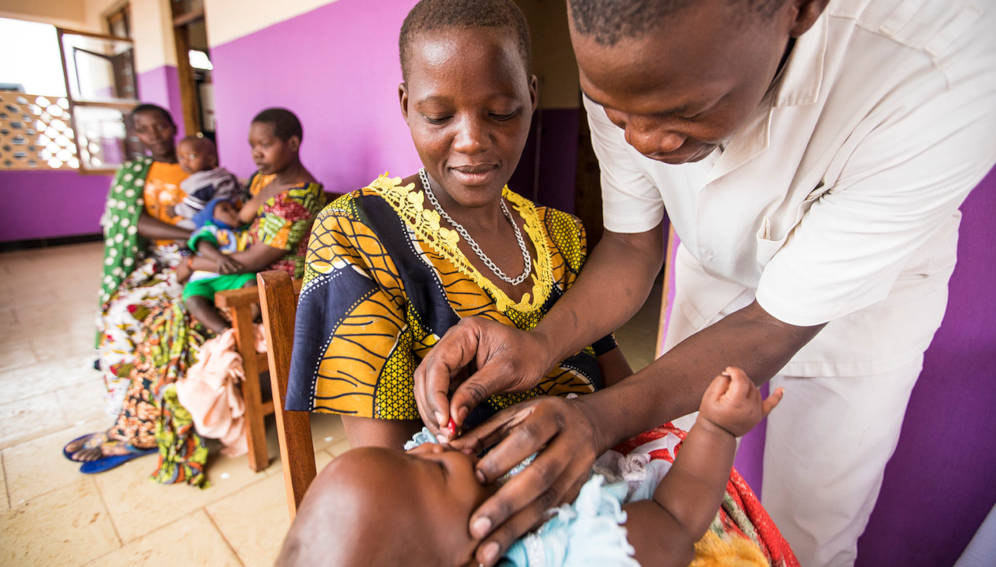21/04/23
WHO launches record health inequalities data collection

By: Ruth Douglas
Send to a friend
The details you provide on this page will not be used to send unsolicited email, and will not be sold to a 3rd party. See privacy policy.
The World Health Organization (WHO) has released the world’s largest ever collection of health data broken down into subcategories such as ethnicity, sex or age.
This so-called disaggregated data is essential for targeting health care where it is needed most and closing the gap between rich and poor, public health specialists say.
Gemu Tiru, director for health system strengthening at the Ministry of Health, Ethiopia, said: “Disaggregating data by age, by sex, by place of residence, wealth or economic or educational status is very important.
“While we have a very rich data depository that we’ve launched today, it is also true that almost half of the countries of the world are unable to report or use disaggregated data across health-related SDGs.”
Samira Asma, WHO assistant director-general of data analytics and delivery for impact
“Disaggregation will help to identify who is left behind.
“Once we identify those population groups, we will design policy programmes or projects that will be targeted to address [them].”
The Health Inequality Data Repository contains nearly 11 million data points within 59 datasets, relating to health topics such as COVID-19, child and maternal health, immunisation, and the SDGs, as well as diseases such as HIV, tuberculosis and malaria.
It allows users to chart health inequalities across population groups over time, through data that has been broken down according to more than 20 demographic and socioeconomic factors. These range from gender, race and religion, to disability, marital status and education.
“If we only look at averages then it may not provide the complete picture of the situation,” explained WHO health inequality monitoring lead Ahmad Reza Hosseinpoor at a webinar launch on Thursday (20 April).
“We conduct health inequality monitoring to track differences in health across different population subgroups, and this provides evidence on who has been left behind and identifies the situation of inequities.
“This data can then be used to provide us with equity-oriented health policies, programmes and practices and then achieve health equity.”
As well as holding WHO data, the repository, which has been a year in the making, contains data from 15 other sources, including the World Bank, OECD, Eurostat, UNICEF, and other UN agencies.
Analysis of the data shows that the rich-poor gap in health service coverage among women, newborns and children in low- and middle-income countries has nearly halved in the last decade, according to the WHO.
The data also reveals differences in disease prevalence between men and women in wealthy and poor countries. For example, in low-income countries, obesity rates are higher among women than men, while in high-income countries they are the same.
However, disaggregated data remains unavailable for many of the WHO’s health indicators, most of which are only broken down by sex or, less frequently, by age and place of residence.
The WHO is calling on countries to deploy routine health inequality monitoring and data collection and make disaggregated data publicly available.
Samira Asma, assistant director-general of data analytics and delivery for impact at the WHO, says good data is essential for making progress on the SDGs.
“The bottom line is, a repository can be a great thing, making transparent data available to the world and catalysing better collaboration,” she told the webinar.
“But a data repository alone can be also a trap. A saved deposit box when data is deposited but not used.
“While we have a very rich data depository that we’ve launched today, it is also true that almost half of the countries of the world are unable to report or use disaggregated data across health-related SDGs.”
She said the challenge now was using the data to inform policies and improve health outcomes in the populations most in need.
Victoria Fan, a senior fellow in global health at the US-based Center for Global Development, agrees that increasing the frequency and granularity of data is important in order to make it more “policy relevant”.
However, she says there is a broader issue around the data systems that generate a country’s health estimates. She says attempts to track whether countries are building stronger data systems has not been prioritised by the global health community and funding agencies.
“We need better underlying data in order to improve the quality of these national estimates,” she said.
This piece was produced by SciDev.Net’s Global desk.















